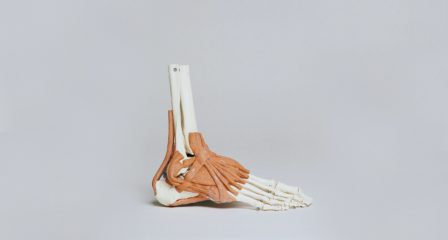As written by Physiotherapist, Sam Lewis.
Each year many individuals set out to achieve a variety of New Year’s goals. Whether these be to drink a little less or spend less late nights at work, a common goal many of us set out to achieve is to run more regularly. Unfortunately new runners, and runners returning following a prolonged break find themselves frequently battling injury and constant ‘niggles’ that prevent them from being able to maintain a regular running program and achieve their running goals.
New runners with injuries are a common presentation within the clinic and evidence dictates that new runners are more than twice as likely to injure themselves compared to recreational or established runners (Videbæk et al, 2015). This increased likelihood of injury can be accounted for by a variety of reasons and preventable mistakes.
Running injuries are commonly a result of placing a load (i.e. running) on our tissues that exceeds their capacity. Our tissues capacity to tolerate load can be influenced by a variety of factors.
We separate factors that contribute to an injury into intrinsic (internal) and extrinsic (external) factors.
Intrinsic factors may include, but are not limited to; age, gender, current level of fitness, history of injury, and body mass index (Nielsen et al, 2013). Often as a novice runner these variables are difficult to have control over, yet are extremely important to consider when trying to minimise the risk of injury.
Extrinsic factors are external factors that are controllable. When these factors are well controlled, we can increase our tissues capacity to tolerate running load whilst minimising the risk of injury. However, these factors are often poorly managed in new runners as they try to achieve their running goals too quickly, increasing their risk of injury. These external factors may include:
Volume: Volume refers to the total number of kilometres or distance someone is running and is often recorded as a total distance per run, or as a distance total per week. (Example = I completed a 5km run OR I run 10km per week). Often new runners increase their volume too quickly or maintain a volume of running that exceeds their capacity. This in turn can lead to the onset of injury related symptoms.
Frequency: Frequency refers to how often we run and it is often recorded per week.(Example = I run 3 times per week). New runners often increase their frequency of running too quickly, often running on consecutive days, inhibiting the body’s ability to heal and regenerate in response to the load through running.
Intensity: Intensity refers to how hard we are running. Often this is recorded as a rating of perceived exertion (RPE), speed or as a percentage of our max heart rate. (Example = yesterday I ran for 3km at 8/10 RPE OR 80% max heart rate OR I ran 3km at 5:30min/km pace). New runners often misjudge how hard they are working and run for too long or too frequently at a high intensity. Running at a higher intensity causes increased stress to the body’s tissues and can increase the time required for our body to recover. Often new runners fail to allow enough recovery time between high intensity runs, or complete every run at a high intensity which can increase the risk of injury.
Terrain: Terrain refers to the type of surface we are running on. Examples of terrain include roads, trails, grass, synthetic track, hills, sand or on the treadmill. Novice runners often do not consider the type of terrain they run on and tend to run on terrains that are easily accessible. Different terrains can influence how hard our tissues have to work and can therefore place increased load through our tissues. When poorly managed, terrain can be a factor that contributes to injury.
Symptom Identification:
As a new runner it is also often easy to misinterpret what our body is telling us when we run. It is common to feel some level of discomfort or difficulty as a new runner and increasing the level of physical activity. However, it is important to distinguish these ‘normal’ sensations from symptoms that are telling us we are overworking and aggravating our body. Often these symptoms can disguise themselves over time and will not have a direct ‘mechanism of injury’. Rather they will eventuate as a result of maintaining running at an increased volume/frequency/intensity for a period of time. These symptoms can vary between individuals with specific presentations requiring a Physiotherapy consultation to accurately determine diagnosis and put forward an appropriate management plan.
How can a Physiotherapist help a new runner?
Programming: As a new runner it is common to feel unsure of where to start with your running (volume/intensity/frequency). Booking a consultation with a physiotherapist can prove an easy starting point to work together collaboratively to structure a suitable running program to achieve your goals. Whether your goals are to run in a race or event later in the year, or to ensure you are minimising your risk of injury as a recreational runner, working with a physiotherapist can enhance your running journey and reduce the likelihood of injury.
Symptom/injury management: If you are beginning to run more regularly and experience abnormal levels of pain, tightness, fatigue, aches or discomfort prior to/during/following your runs, consulting with a physiotherapist can ensure that you are not at unnecessary risk of an injury, or exacerbating any current injuries that might be hiding or misinterpreted as normal feelings associated with your new running program.
Injury risk reduction: If you are new to running and are looking to be proactive and decrease the likelihood of injuring yourself, consulting with a physiotherapist can provide you with a great starting point as they will perform a thorough assessment and provide appropriate advice regarding running load and symptom management, as well as working in tandem with strength and conditioning coaches to provide you the opportunity to complete specific exercises to not only minimise the risk of injury, but improve your running performance.
SUMMARY:
- New runners are at an increased risk of injury when compared to established and recreational runners.
- A variety of factors can contribute to the risk of injury in new runners. Factors we can easily control are volume, frequency, terrain and intensity. Controlling these variables through a well structured program and education can decrease the likelihood of an overuse injury.
- New runners can struggle with symptom identification and can fail to know what our body is telling us when we run and what is normal and what is abnormal.
- A physiotherapist can play a vital role in a new runner’s journey through supporting a well structured running program that suits the individual, educating runners on their symptoms and what to look out for and managing/preventing runners injuries.
- Through this approach we can optimise the likelihood of achieving your new year’s running goals and reduce the chances of getting injured.
References:
Nielsen, R. O., Buist, I., Parner, E. T., Nohr, E. A., Sørensen, H., Lind, M., & Rasmussen, S. (2013). Predictors of Running-Related Injuries Among 930 Novice Runners. Orthopaedic Journal of Sports Medicine, 1(1), 2325967113487316–2325967113487316. https://doi.org/10.1177/2325967113487316
Videbæk, S., Bueno, A. M., Nielsen, R. O., & Rasmussen, S. (2015). Incidence of Running-Related Injuries Per 1000 h of running in Different Types of Runners: A Systematic Review and Meta-Analysis. Sports Medicine (Auckland), 45(7), 1017–1026. https://doi.org/10.1007/s40279-015-0333-8



